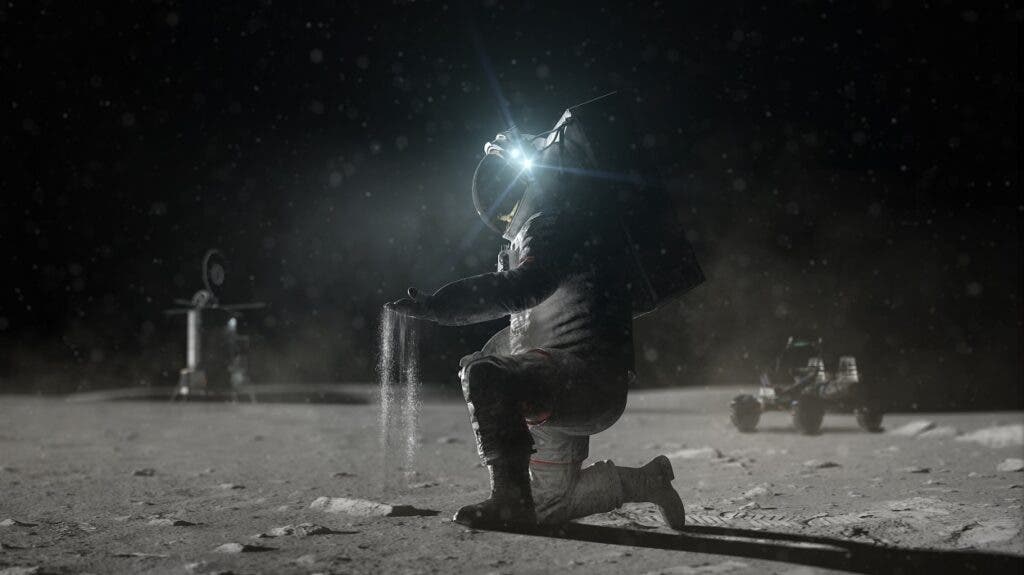
One day, maybe in the not-too-distant future, we will see communities living on the moon. However idealistic this seems, it’s not all that implausible, especially if we’re starting with scientific research stations; but there are many limitations. The lack of an atmosphere and water are obvious problems, as is the lack of workable materials. But an unexpected problem also pops up: the lack of space.
Surely enough, the moon is a pretty big place, there shouldn’t be a problem in setting up a few scientific bases without getting crowded — or so it would seem. Not all the space on the moon is usable or easily usable and currently, half of the primary research and landing sites lie around craters just around the Moon’s South Pole. That makes for a very small area (around the size of Luxembourg) that can be used for missions.
In fact, NASA is already looking at ways to ensure that this limited space is used responsibly and in a way that doesn’t cause conflicts. So what can be done?
A plan for the moon
Between now and 2026, more than 20 missions to the Moon are anticipated, with NASA, other international organizations, and even private businesses taking part. The majority of these missions are aimed at the same craters and other features, and half of them are going to the Moon’s South Pole. For the first time in history, many of these missions will operate close to one another on the surface of a celestial body.
This will present problems for humanity that have never existed.
The Office of Technology, Policy and Strategy (OTPS) at NASA has released a new Lunar Landing and Operations Policy Analysis that looks at some of the policy issues that will arise from having several missions land on the Moon.
NASA leadership asked OTPS to investigate any potential policy issues that may be connected to these difficulties as part of the Artemis campaign. What happens, for instance, if a different organization wants to operate or land right next to a NASA rover? What if that company’s landings throw off harmful rocks and dust that damage other’s property on the Moon or in cislunar space? What if some agencies’ Moon operations put the explorations of other agencies in danger? Do some places need extra protection because of their distinctive historical or scientific value? All these questions don’t currently have any answers, from NASA or any other organization.
The OTPS concluded that American policymakers should work with mission planners of other nations to find risks that each part of a mission could cause and find a radius or other distance around each activity that can reasonably reduce (but probably not eliminate) those risks.
They also suggest that mission planners come up with models to find the best ways to get between landing sites, places of interest and structures to best insure a reduction in possible harm. NASA could also work with international partners whose goals may overlap with or be helped by the finding of these pathways.
If fixed facilities are erected in areas where mobile assets are likely to be used, the report suggests that they be given radio and light beacons and that their locations be made public. In every case, these facilities should be set up so that they don’t get in the way of moving vehicles.
Cultural sites on the moon
NASA and Congress incorporated safeguards for cultural sites (such as Neil Armstrong’s first steps on the Moon) into the Artemis Accords, a set of bilateral agreements between the United States and other governments around the world taking part in the Artemis lunar missions, to help protect both the past and future.
“Because these (historical) sites will be indefinitely protected — and thus generally off-limits for operations — we recommend that NASA exercise extreme restraint in seeking heritage protection for future sites, particularly those in potentially crowded areas such as the south polar region,” the study says. “Heritage protection is also only appropriate after operations have ceased; while operations are ongoing, other policy tools, such as safety zones, are more well-tailored to protecting those activities.”
The OTPS study highlights international community concerns for future sites like where NASA plans to land the first woman and the first person of color as part of the Artemis program. It was agreed upon by the countries signing the Artemis Accords that the criteria for heritage protections, which benefit the whole community but are open to possible abuse, should be developed through multilateral diplomatic efforts, but this has not yet taken place.
So far, 13 future sites have been found that are considered scientifically important because they are close to the South Pole of the Moon. This is an area with permanently shadowed areas that are rich in resources and have terrain that humans haven’t explored yet.
“Several of the proposed sites within the regions are located among some of the oldest parts of the Moon, and together with the permanently shadowed regions, provide the opportunity to learn about the history of the Moon through previously unstudied lunar materials,” said Sarah Noble, Artemis lunar science lead for NASA’s Planetary Science Division.
However, for now, it is up to policymakers to try and agree with other countries on the best course of action for future Moon settlements. Let’s just hope that we can get along on the Moon better than here on Earth.






